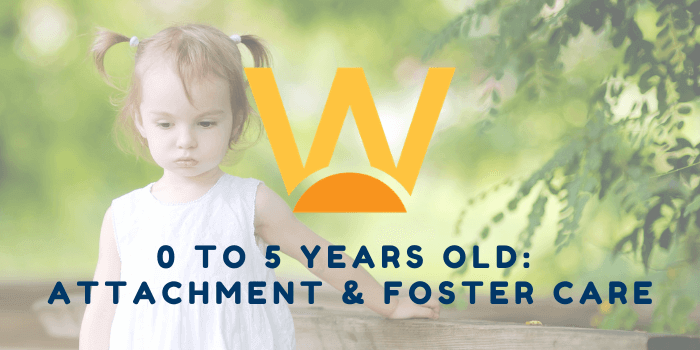According to AZCourts.gov (2020), data shows that in 2020 there were 6,500 children under the age of 5 in the child welfare system. This means that very young children had been removed from their homes and placed in group homes (yes there are group homes for children five and under), foster homes, and kinship (some of which become foster homes) placements. Many of those children are removed due to neglect, and about 50% of them are reunified within 1-2 years.
Some may find this data disheartening. What I see in these numbers is a great need for our community to assist with early attachment disruptions and prevent negative outcomes for all these infants, toddlers and preschoolers. I am an Infant and Early Childhood Specialist and Circle of Security Parent Facilitator, which means that I focus on the social/emotional well-being of very young children. What I have learned over the years is that children, aged zero to five, who are provided security through emotional and physical safety do much better in gaining the skills they need for school and independence.

The reason for this is found in research on attachment. Research shows that children who have strong positive relationships with caregivers (secure attachment) build a greater sense of comfort and self-confidence. We also know that with a greater self-confidence we are more willing to explore….and LEARN…which means our brain is more ready to take in a lot of information about a lot of different things. Between 0-5 our little ones are learning through their relationships with their caregivers how to find safety when emotional, how to feel secure in their exploration, and how to respond to their environment through experiences. What we also know is that strong positive relationships with caregivers, help little ones in times of “toxic stress” or “trauma”. These relationships provide nurturance and care, which helps little ones heal from adverse experiences.
When we put all this information together, we see the importance of the nurturance provided by foster parents in this very young stage of life. Of course, I would like to share a story.
I was completing a home visit to a foster mother, who had just had an infant placed in her home. This little one had been substance exposed, as mother was overcoming a drug addiction. The foster mother had the little one in a baby wrap and proceeded to tell me that the wrap was necessary as the little one needed closeness, due to crying when put down. There is a lot of information to share in this story, but the piece that got me, was that the foster mother was 100% present for this little one. She was greatly attuned to the needs of the infant, feeding, diaper changes, play time, comfort, and safety. She knew that this little one needed security and she was going to give her as much as she needed. I will share that this foster mother had very little sleep, and still had a household of other children to care for. When she discussed the needs of the infant, her focus and presence were stated with no hesitation. She was amazing with the support of her husband and some of the older children. The family continued to care for the infant and built a strong relationship with the biological mother, providing supervised visits in their home, so the mother could feel safe in being present for the infant herself. This child found safety in the relationship with their foster mother and grew to know safety in their relationship with the biological mother. Eventually the child reunified with the biological mother and continued to do well with support professionals assisting the family in their development.
In this story there is so many things that I could create whole blogs about. However, I’m just going to highlight some key points.
An attachment relationship in foster care is so important. The bond that a foster parent builds with a child, and eventually the attachment that grows from that foster child with the caregiver is healing.
A foster parent has a strong role in the possibility of a healthy reunification experience with their biological parent. There are so many reasons a child may come into our homes as foster parents, but the key is that we are a home when for whatever reason the child’s parent cannot be there for them.
A foster parent is often not provided the supportive services after their foster child is reunified to assist that foster parent in the grief/loss they WILL feel, because in a healthy attachment system, the foster parent must become emotionally vulnerable to assist the little one. So, the importance of that foster parent building a community of support, with others that know the loss that comes with this type of giving, will assist them in their continued care.
So, with the sincerest appreciation, I would like to recognize amazing Foster Parents and Kinship Caregivers, for giving your heart so completely to the children you bring into your home. This level of giving is often unrecognized. However, you are indeed not only fostering a very young child, but you are fostering the foundation for healthy emotional development for years to come.

